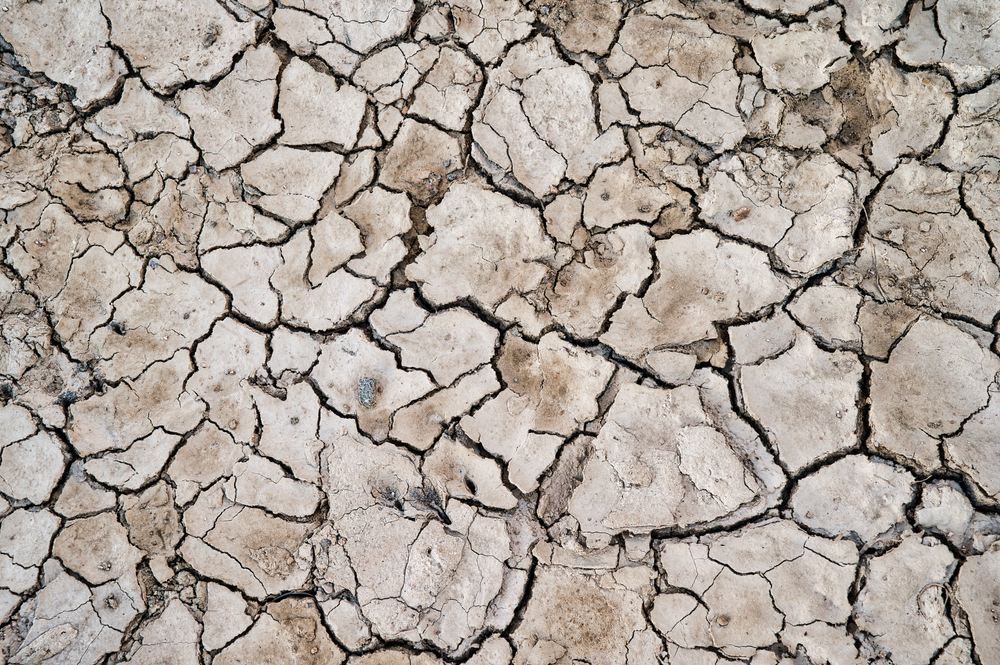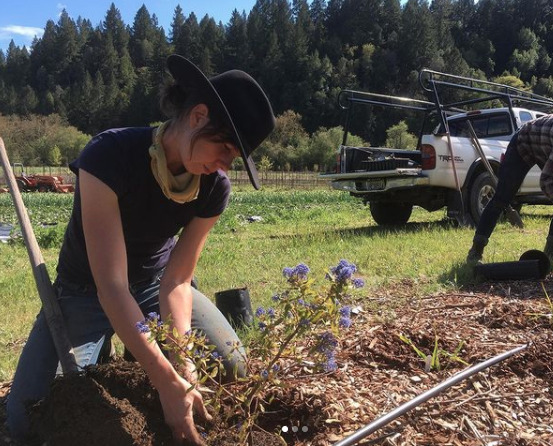Western Drought Forces Farmers to Make Tough Decisions
As water sources dry up, farmers are culling herds, stripping trees of fruit and forgoing planting crops this year.
Western Drought Forces Farmers to Make Tough Decisions
As water sources dry up, farmers are culling herds, stripping trees of fruit and forgoing planting crops this year.

Ninety-six percent of the West is suffering from at least some level of drought.by Wirestock Creators/Shutterstock
Due to the worsening drought sweeping across the West, Sonoma County farmers David and Kayta Plescia were forced to cancel their vegetable CSA program. The couple, who run Green Valley Community Farm in Sebastopol, says they simply didn’t have enough water to plant the necessary vegetables this year.
“We got a third of the usual rainfall [during the rainy season] and that was after last year, which was also very low,” says David. “The two combined did a number on people’s water sources.”
The farm’s catchment pond, their irrigation source, didn’t fill with water this year. “That’s the first time it’s ever happened,” he says. “We have one-twentieth of the water we usually have.”
Farmers of all kinds are being forced to make similarly tough decisions as water supplies dwindle. Ranchers are trying to stay ahead of the curve by culling their herds. Apple growers are dropping fruit on young trees in an attempt to keep them alive. Almond and peach growers are doing the same.
According to the most recent US Drought Monitor report, 96 percent of the West is suffering from at least some level of drought. California and Nevada are now 100 percent in drought after two years of exceptionally dry conditions. Reservoir levels in both states are dismally low, intensifying the concern for wildfire season, which runs between May and October. Already, there have been more fires and acres burned in California than this time last year.
Farmers in other states are affected too. In January, New Mexico officials warned farmers and ranchers who rely on water from the Rio Grande and other rivers to prepare to go without it this year, recommending “that farmers along the Rio Chama and in the Middle Valley that don’t absolutely need to farm this year, do not farm.” Utah irrigation water providers are implementing increased fines for overuse. And in Idaho, which isn’t faring as badly as other states, farmers in central and southern counties are preparing for crop disaster losses.
Conditions are especially dire in California, where 41 of 58 counties are under a drought state of emergency. This year’s drought is similar to years past, with one caveat, says Dan Sumner, UC Davis professor of agricultural and resource economics and director of the UC Agricultural Issues Center. “Sonoma County has been hit more this time,” he says, “and that is less common.”
It’s also affecting the farm counties of the Central Valley, home to some of California’s richest agricultural land, where farmers have long relied on water from the US Bureau of Reclamation’s Central Valley Project (CVP) for irrigation. Last week, the bureau cut allocations for some farmers to zero.

“Water is very hard to come by,” says Vincent Ricchiuti, chief operations officer for P-R Farms and Enzo Olive Oil in Fresno, California. “This year is drastically worse [than last year].”
The persistent droughts led Ricchiuti to install a new system called AgMonitor in 2015. The technology takes into account the weather, age of tree and type of soil, and uses additional data from probes that measure soil moisture to determine how much water to distribute. “The goal is not to overwater or underwater,” he says. “It’s to really zero in on irrigation.” That helps a limited water supply last longer.
Ricchiuti says the droughts mean farmers have to be more conscious about what they’re planting and where they’re planting it. At Green Valley Community Farm, the Plescias have applied for a cannabis permit, which would allow them to grow a crop that requires much less water. They’re also considering moving their vegetable farm.
“The site that we’re on is untenable for a vegetable farm business, we’ve realized,” says David, who says he’s eyeing another location that has a more reliable water supply. As renters, the Plescias have more flexibility than landowners, some of whom operate on family farms that have run on the same land for several generations.
California’s recurring drought and wildfire conditions led fiber artist and farmer Leslie Adkins to relocate her Heartfelt Fiber Farm. Last year, as the wildfires ravaged Sonoma and Napa counties, she made the difficult decision to move her small flock of sheep, goats and alpaca from California to Illinois.
“We were originally thinking of Oregon or Washington, but the writing on the wall in the West, with the megadrought, has been there for a while,” says Adkins, who has a graduate degree in environmental studies. “My family decided we needed to go somewhere, somewhere where we could start over, maybe on a smaller scale, that would be less affected farming-wise by this climate change that’s everywhere.”
Adkins believes we’ll continue to see more farmers become climate refugees as droughts and rising temperatures persist. “I just reached my own personal conclusion, and I’m an optimist by nature, but I have concluded that there’s not a future for farming in California,” she says.
UC Davis’ Sumner says it’s not time to worry just yet. “It could become more severe, but that is a few years away,” he says. “Droughts in California have been part of agriculture for a very long time…California is a wonderful place for many crops and that has not changed at all.”
Follow us
This work is licensed under a Creative Commons Attribution-NoDerivatives 4.0 International License.
Want to republish a Modern Farmer story?
We are happy for Modern Farmer stories to be shared, and encourage you to republish our articles for your audience. When doing so, we ask that you follow these guidelines:
Please credit us and our writers
For the author byline, please use “Author Name, Modern Farmer.” At the top of our stories, if on the web, please include this text and link: “This story was originally published by Modern Farmer.”
Please make sure to include a link back to either our home page or the article URL.
At the bottom of the story, please include the following text:
“Modern Farmer is a nonprofit initiative dedicated to raising awareness and catalyzing action at the intersection of food, agriculture, and society. Read more at <link>Modern Farmer</link>.”
Use our widget
We’d like to be able to track our stories, so we ask that if you republish our content, you do so using our widget (located on the left hand side of the article). The HTML code has a built-in tracker that tells us the data and domain where the story was published, as well as view counts.
Check the image requirements
It’s your responsibility to confirm you're licensed to republish images in our articles. Some images, such as those from commercial providers, don't allow their images to be republished without permission or payment. Copyright terms are generally listed in the image caption and attribution. You are welcome to omit our images or substitute with your own. Charts and interactive graphics follow the same rules.
Don’t change too much. Or, ask us first.
Articles must be republished in their entirety. It’s okay to change references to time (“today” to “yesterday”) or location (“Iowa City, IA” to “here”). But please keep everything else the same.
If you feel strongly that a more material edit needs to be made, get in touch with us at [email protected]. We’re happy to discuss it with the original author, but we must have prior approval for changes before publication.
Special cases
Extracts. You may run the first few lines or paragraphs of the article and then say: “Read the full article at Modern Farmer” with a link back to the original article.
Quotes. You may quote authors provided you include a link back to the article URL.
Translations. These require writer approval. To inquire about translation of a Modern Farmer article, contact us at [email protected]
Signed consent / copyright release forms. These are not required, provided you are following these guidelines.
Print. Articles can be republished in print under these same rules, with the exception that you do not need to include the links.
Tag us
When sharing the story on social media, please tag us using the following: - Twitter (@ModFarm) - Facebook (@ModernFarmerMedia) - Instagram (@modfarm)
Use our content respectfully
Modern Farmer is a nonprofit and as such we share our content for free and in good faith in order to reach new audiences. Respectfully,
No selling ads against our stories. It’s okay to put our stories on pages with ads.
Don’t republish our material wholesale, or automatically; you need to select stories to be republished individually.
You have no rights to sell, license, syndicate, or otherwise represent yourself as the authorized owner of our material to any third parties. This means that you cannot actively publish or submit our work for syndication to third party platforms or apps like Apple News or Google News. We understand that publishers cannot fully control when certain third parties automatically summarize or crawl content from publishers’ own sites.
Keep in touch
We want to hear from you if you love Modern Farmer content, have a collaboration idea, or anything else to share. As a nonprofit outlet, we work in service of our community and are always open to comments, feedback, and ideas. Contact us at [email protected].by Shelby Vittek, Modern Farmer
June 7, 2021
Modern Farmer Weekly
Solutions Hub
Innovations, ideas and inspiration. Actionable solutions for a resilient food system.
ExploreExplore other topics
Share With Us
We want to hear from Modern Farmer readers who have thoughtful commentary, actionable solutions, or helpful ideas to share.
SubmitNecessary cookies are absolutely essential for the website to function properly. This category only includes cookies that ensures basic functionalities and security features of the website. These cookies do not store any personal information.
Any cookies that may not be particularly necessary for the website to function and are used specifically to collect user personal data via analytics, ads, other embedded contents are termed as non-necessary cookies.
This is a culmination of generations of treating water as a never-ending resource. Paving over critical recharge zones, channelizing riparian corridors, irrigating ornamental landscapes like lawns, over irrigation of farm crops, and overall sending water to the ocean instead of slowing it, spreading it, and sinking it. Its not complicated, we just need the will, both politically and culturally.
This is what happens when millions and millions of people move to desert areas. Drought and wildfires in the west are nothing new, folks. If people are blindsided by these things after them happening for millennia, then I really can’t feel sorry for them. Ignorance is no excuse.
For land that isn’t in a drought ‘zone’ ; try northern Canada!
How ’bout notpoopin’ in the water? Hey Otis: Reservoirs? Great. I love evaporation. How ’bout rain collection in barrels & cisterns? How ’bout drip irrigation? How ’bout hydroponics? How ’bout urban agriculture and veritcal farming? Anybody read Jared Diamond? Most Australians and South Africans will soon be “drought refugees” – Welcome your new neighbors! Cheers, Bobby
CA can only blame themselves for their drought problems. Thanks to NIMBY, no new reservoirs have been built in many years. A LOT of water that could help farmers and people in general goes to support fish instead.
Golly, there’s drought in the Far West? How totally unprecedented. I mean, these farmers had absolutely no warning and were blindsided. Hey, maybe they can get a federal bail-out!